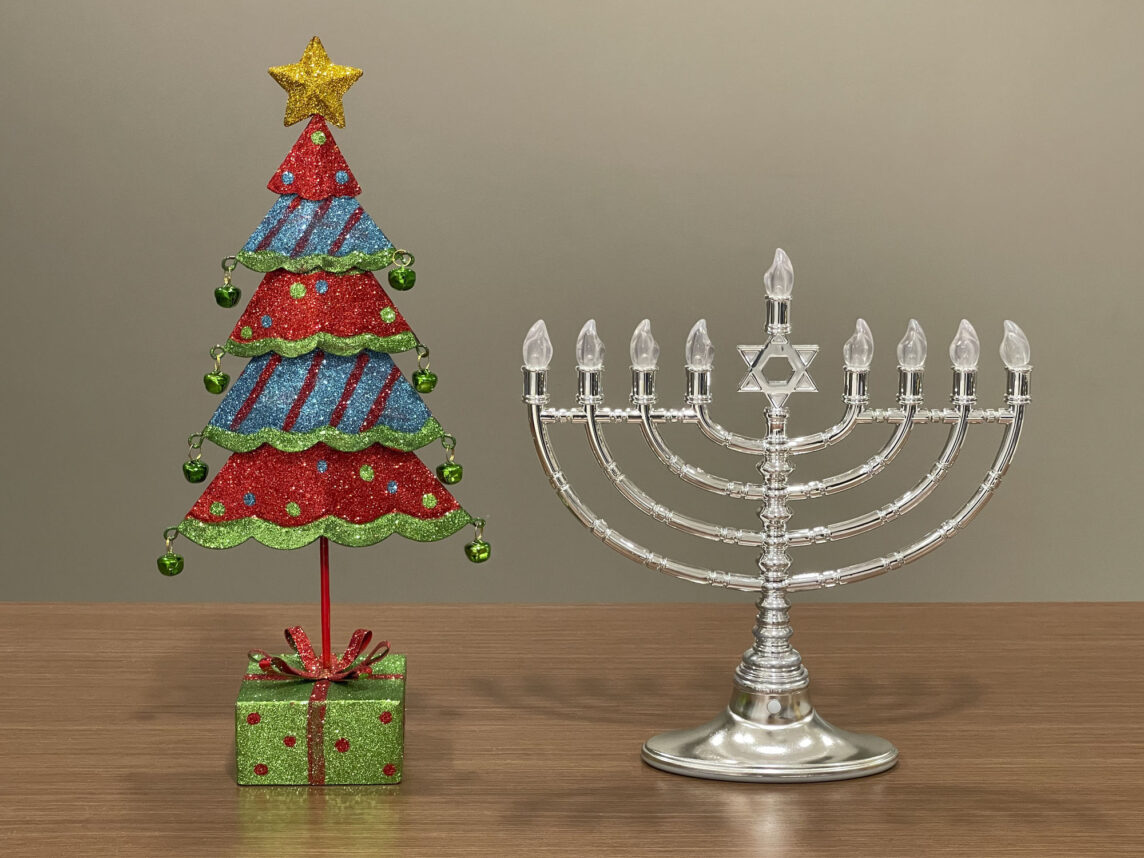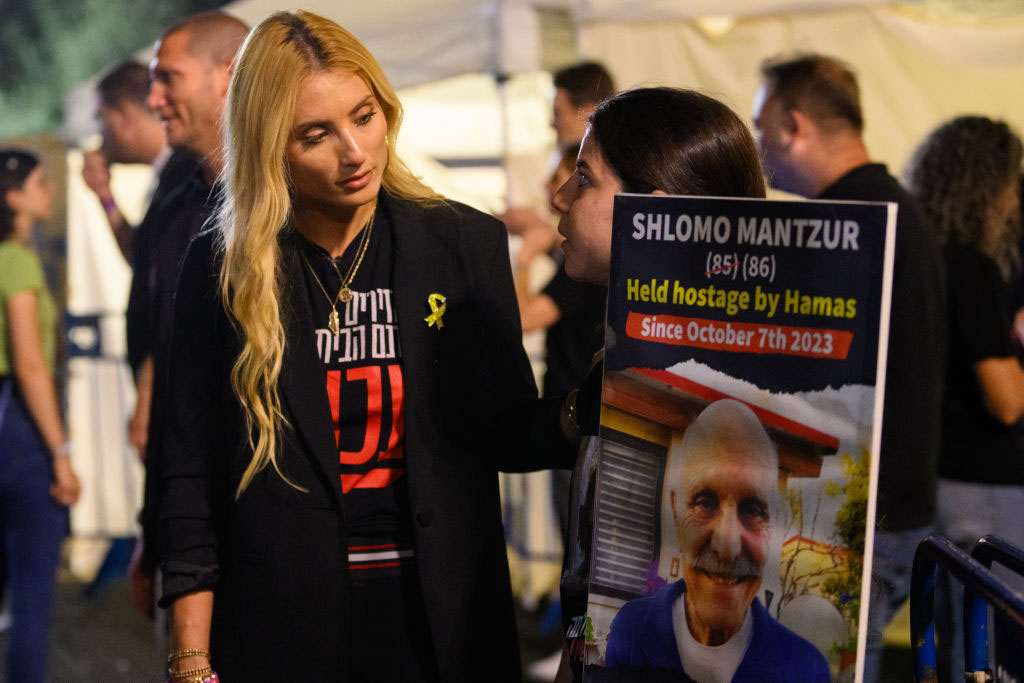
There are some Ashkenazim in the United States who have never met a Persian Jew. I love seeing the looks on their faces when they tell me they’re from, for example, Cary, N.C., and I say I was born in Tehran.
On the flip side, I never knew Ashkenazi Jews existed until my family left Iran. The only Jews I’d seen were dark-skinned with black hair and names such as Aziz, Parvaneh and Heshmatollah.
On my first day of school in the U.S. — a public school with a large Ashkenazi population — I saw children with light skin, blond hair and blue eyes. “Dad,” I asked that evening, “Do some people get pale if they don’t eat well?”
“Sometimes,” he said. “Why do you ask?”
“Because I saw kids today with really white skin and almost white hair, and they looked like they didn’t get enough vitamins. Aren’t they eating enough kebab?” I asked. In my defense, I was only 7.
Over the next decade, I befriended many Ashkenazi kids. Ironically, I found them to be exotic. I also learned that most of them consume a healthy amount of nutrients.
I learned as much as I could about their history and culture. I loved to ask about their life stories: Where were their great-grandparents from? What did they serve at Shabbat dinner and why? Oddly, my Ashkenazi friends seldom asked me about my history and culture.
I knew I wasn’t Ashkenazi, so for nearly 30 years, I thought I was Sephardic. I wasn’t alone. Most Persian Jews, when given the option between Ashkenazi or Sephardic, think they’re Sephardic, especially if they’re named Heshmatollah.
But I’m not Sephardic. Although a small group of Persian Jews can trace its ancestry back to Spain, every relative I’ve interviewed claims our family roots date back to the Persian Empire. We’re really, really Persian. Last year, when my mother discovered a Trader Joe’s bottle in my pantry with the label “Spanish Saffron,” she seemed genuinely affronted and reminded me that our family never consumed saffron that wasn’t from Iran.
We are Mizrahim, from the Hebrew word “Mizrach” (“the East”). Many of the American Jews I’ve met don’t know about this third category. I can’t blame them, especially when there are Mizrahi Jews who think they’re Sephardic.
I asked Rabbi Daniel Bouskila, director of the Sephardic Educational Center (SEC) about Mizrahi Jews. He said, “ ‘Musta’arabi’ was the term originally used for non-Sephardic/Spanish Middle Eastern/North African Jews. They were never called ‘Mizrahi.’ That’s a term Ashkenazi Zionism gave them in the 20th century.”
Great. We didn’t even get to pick our own label.
“Musta’arabi” is Arabic for “those who live among the Arabs.” Where does that leave Persian Jews, since Iran — which was called Persia until 1935 — was never an Arab state?
The name game is complicated, and sometimes I need a cold glass of arak to tackle it.
I have much to learn about Jewish history, but I’m an eternal student, even when I’m labeled an expert. Last week, I was a panelist alongside Bouskila at a webinar titled “Celebrating Our Diverse Jewish American Heritage: The Sephardic and Mizrahi Jewish Roots of L.A.” The program was moderated by Journal Editor-in Chief David Suissa and hosted by the Jewish Federation of Greater Los Angeles’ Community Engagement and Y&S Nazarian Initiatives, in partnership with Jewish American Heritage Month of the City of Los Angeles (JAHM-LA).
I knew I wasn’t Ashkenazi, so for nearly 30 years, I thought I was Sephardic. I wasn’t alone.
During the webinar, Bouskila observed that Sephardic Jews who came to the U.S. became “immigrants twice” — first as immigrants to a new country and second, as immigrants to a whole new world of American Jews that was and is primarily defined by Ashkenazim. His words captured the soul and struggles of my family’s narrative in the U.S.
I spoke about how Mizrahi voices still don’t have their rightful place in the American Jewish community primarily because few people know our stories. The remedy, though, starts in schools: engaging speakers, powerful videos and other visual aids, and Mizrahi students, who must learn their history and feel comfortable to stand in front of a class and own their heritage.
In my 12 years at heavily Jewish public schools in Beverly Hills, I can’t recall one guest speaker who lectured about Persian Jews, despite the fact that we constituted nearly half the school’s population.
Then again, there’s another way to look at this: I ardently advocate for Mizrahi voices, but maybe, in an age of anti-Semitism, it doesn’t matter who’s Ashkenazi, Sephardic or Mizrahi, because Jew haters see only one thing: a Jew.
I don’t think Nation of Islam leader Louis Farrakhan gives a fig whether I call myself Mizrahi or Sephardic. Neither do white supremacists, Iranian leaders or Hamas terrorists.
I’ll continue to teach Jews and non-Jews about my vibrant community but, when it comes to the rabid anti-Semites, I’m content to simply be called a Jew.
An online exhibit for “Celebrating Our Diverse Jewish American Heritage: The Sephardic and Mizrahi Jewish Roots of L.A.” is currently on display here.
Tabby Refael is a Los Angeles-based writer and speaker.






















 More news and opinions than at a Shabbat dinner, right in your inbox.
More news and opinions than at a Shabbat dinner, right in your inbox.